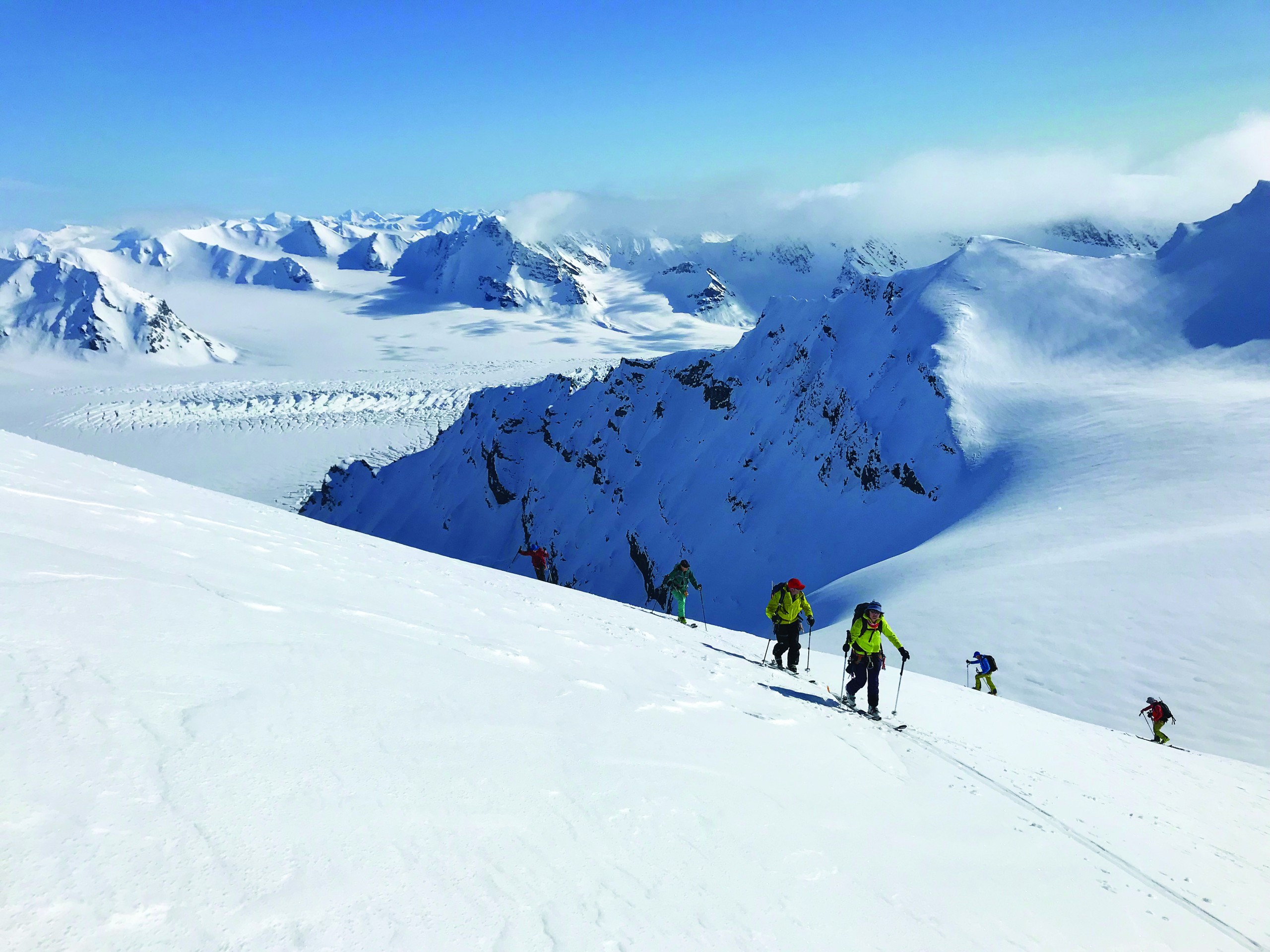How do I train for ski touring?


How can we possibly prepare for full days out ski-touring in advance of the real thing?
I’m not a fitness coach, but I have spent the last 30 years trying to get fit for each coming winter. As a guide, I see the results when my clients put in a little pre-season effort, and I am often asked for advice. Never have we been so well equipped with online videos and training apps, so here is a down and dirty guide to where to go looking for ideas.
First up – anything is better than nothing! It is easy to feel like it’s not worth going out if you can’t find time for that 20km trail run. Don’t fool yourself, as there is a wealth of evidence that supports short high intensity training as a way to get great results. But before we dive into details, remember there are a few different things to aim for:
In my experience, we all tend to focus on the first (heading out for a handful of runs – usually too late in the year) and largely ignore the others. So cover all the bases by working smarter, not just harder, or for longer.
Biking (on road or mountain biking) is ideal and probably the closest match to skiing muscles we can use at home. Running and hill walking are great preparation for skinning. Hills are better than junk miles on the flat – especially if you can find similar gradients to those you will be skinning up. To increase the gains from short sessions, carry extra weight uphill with you. Even better if you can leave it behind, to spare your joints on the way down. So carrying water or sand is better than carrying bricks or something you can’t dump on the hill.
If you are short of time, try high-intensity interval training (HIIT) sessions. For example, hill reps also build power and strength as well as busting your lungs! These are especially good in our older years, as it is unlikely that we are going to expand our cardiovascular range, but we do need to keep it – so going to the limit is good, in short doses. Just remember that we only get stronger and fitter if we subsequently rest and recover. This is when the magic happens!
Many people head to the gym, where machines allow you to perform exercises in good form – thus reducing your chances of injury. Typically, people will go for a leg press for upper quads, a leg extension for lower quads and a leg curl for hamstrings. Several machines target the inside and outside thigh muscles well. But be careful: the last thing we want to do is pile on simple muscle bulk. We are training for an endurance sport, so the best training strategy is low weight/high reps. As you get fitter, increase the reps rather than the load.
It is also important, for injury prevention, that we work the opposing (antagonistic) muscle groups as much as the main power groups. The problem is that many gym machines work in the opposite way to skiing: we often want to absorb bodyweight under pressure, rather than simply pushing (or pulling) hard. For that reason, we also need to focus on…
The secret to injury prevention is developing the smaller muscles that stabilise the joints; as well as absorbing our bodyweight. Some of the best ski-specific training combines the best strength exercises with ski-like dynamic balance to work your flexible range and strengthen your core.
Step-ups, lunges and squats to heel raises are all great examples that allow you to get fit, get strong, but work all those stabilising muscles at the same time. The even better news is that many of these exercises use nothing more than your own bodyweight for resistance – and a few basic items you should have at home. Hence you can fit this around your daily schedule without requiring a special trip to the gym.
I have to confess to over-developing my quads and neglecting my glutes in the past. I now spend far more time on the smaller muscle groups (hip flexors, hip rotators, etc) that keep my hips and knees strong, stable and well aligned. The rest then follows.
Any good gym will have someone that might not know skiing so well, but they will know how to strengthen your key joints in a healthy, well-balanced way. Don’t be shy to ask for help – because doing the right exercises well makes a massive difference to your results:time ratio!
And finally…
For inspiration and guidance Ortovox has a great range of exercises on their Youtube channel but they are on the dry side and quite hard to follow. The Ski Club of GB videos (with Chemmy Alcott) are good for real-time accompaniment. The Ski-Fit App is the best programme I have found to work along with.
At the end of the day, you need to find what works for you: be that a personal trainer; any good gym; or even a good book (try Training for the Uphill Athlete; see also uphillathlete.com/10-tips-for-training-your-core-for-ski-mountaineering).
Lastly, start early, be realistic about the time and opportunity you have and remember that anything is better than nothing (and anything you do is way better than all the sessions you planned, but never got round to).
Happy training!